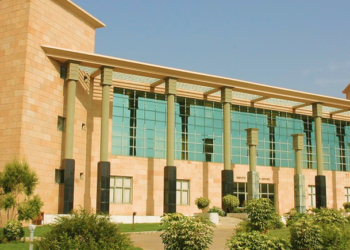The post-pandemic prospects of Indian real estate appear promising
BY AMIT MODI
Retail inflation in India surging to 7.79 percent in April, the highest in eight years, and refusing to come down despite repo rate hikes by the Reserve Bank of India (RBI) has led to many sectors of the economy rolling back expansion plans. The real estate sector has also borne the impact of steep inflation and the geo-political tensions in the wake of the Ukraine-Russia war that has affected supply chains. The cost of construction materials has shot up, leading to soaring overall development costs of projects for developers.
Yet all these factors have not driven people away from the real estate markets as they have not refrained from investing in properties even at escalated prices.
While other asset classes such as equity markets, bonds, FDs and gold have tanked due to adverse domestic factors and the international conflict, real estate remains the most preferred and dependable source for investment—evidencing a huge uptick in demand from both NRIs and end-users/investors in the country.
Property appreciation provides the best protection against inflation, if buyers can hold on to and maintain their asset for years. As real estate returns hold steady during inflationary periods, it will continue to be an excellent inflation hedge, protecting investors against the decline in purchasing power of money.
Recent studies point to a dip in the rate of unsold inventories, indicating that buyers have been booking properties and owning their personal space with enthusiasm even after sharp hikes in prices. The market stands firm, offering multiple opportunities to investors in both affordable and premium segments. There is a significant change even in the affordable segment—with most buyers who earlier sought one- or two-bedroom apartments now understanding the value of having an extra room. This is all the more true in the case of working couples who are working from home. As many corporates have offered employees the options of Work From Home or Work From Anywhere, it has reinforced the need for more space as far as residential real estate is concerned.
Luxury homes have been the choice of buyers in metropolitan cities like Mumbai, Hyderabad, Bengaluru, and Delhi-NCR. There is a huge demand as far as houses are concerned in both luxury and ultra-luxury segments where the need and want for more square feet along with more number of rooms in apartments is rising. High and ultra high net worth individual (HNWI and UHNWI) homebuyers, including those belonging to the expatriate community, are looking for bigger, more comfortable and lavish houses, as they want to be comfortable within the confines of their homes in case there is another lockdown or stay-at-home scenario. So real estate has proved to be a credible platform for
NRIs, HNWIs and UHNWIs who are parking their money for steady and stable returns.
Further, as the pandemic has ebbed, companies have started functioning from offices, pointing to the bright prospects for commercial real estate too. According to real estate consulting firm Cushman and Weikfield, the net office absorption is expected to rebound strongly, at 30-35%, and will reach 29-31 million sq ft (MSF) by the end of 2022. Also, with the spurt in shopping, malls and multiplexes are throbbing with activity again, significantly boosting the prospects of retail real estate.
The year 2022-23 is poised to be the year of recovery and growth for the property market. The rising demand for housing, reopening of offices, and government support for the infrastructure segment have provided a further fillip for the real estate sector. As a matter of fact, the real estate industry is strong enough to deliver quality projects at affordable cost while adhering to timelines even after several setbacks. All that
counts is the support of the government and buyers’ trust in developers.

The writer is director, ABA Corp, and president, CREDAI Western Uttar Pradesh








